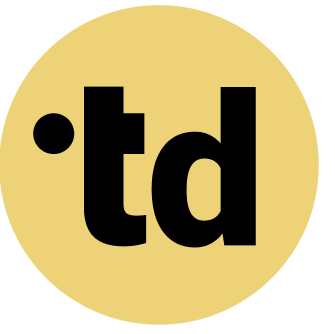Key Takeaways
In Germany, 51% of teams are hybrid, making structured stakeholder communication essential to prevent information silos and maintain productivity.
Practical Framework for Team Architects
As a Team Architect, you can apply these principles to your organization:
- Map Current State: Document existing roles and responsibilities using a tool like teamdecoder.
- Identify Gaps: Where are roles unclear? Where do humans and AI agents overlap?
- Define Clear Boundaries: Specify which tasks are handled by humans vs. AI agents.
- Create Accountability: Assign clear decision rights for each role.
- Iterate and Improve: Continuously refine based on team feedback.
Overcoming communication barriers requires clear protocols, mandated video-on meetings to capture non-verbal cues, and shared digital workspaces.
Practical Framework for Team Architects
As a Team Architect, you can apply these principles to your organization:
- Map Current State: Document existing roles and responsibilities using a tool like teamdecoder.
- Identify Gaps: Where are roles unclear? Where do humans and AI agents overlap?
- Define Clear Boundaries: Specify which tasks are handled by humans vs. AI agents.
- Create Accountability: Assign clear decision rights for each role.
- Iterate and Improve: Continuously refine based on team feedback.
AI integration can save up to five hours per employee weekly by automating summaries and personalizing stakeholder updates.
Practical Framework for Team Architects
As a Team Architect, you can apply these principles to your organization:
- Map Current State: Document existing roles and responsibilities using a tool like teamdecoder.
- Identify Gaps: Where are roles unclear? Where do humans and AI agents overlap?
- Define Clear Boundaries: Specify which tasks are handled by humans vs. AI agents.
- Create Accountability: Assign clear decision rights for each role.
- Iterate and Improve: Continuously refine based on team feedback.
The rise of hybrid teams (humans + AI agents) in Germany, with 51% of teams now operating in this model, presents a monumental challenge in stakeholder management. Traditional communication methods fall short, leading to information silos and weakened relationships. For Team Architects-from consultants to HR leaders-the mission is to redefine roles and responsibilities for this new era. This requires a fresh approach, integrating human-centric strategies with AI-powered tools to ensure every stakeholder, remote or in-office, remains perfectly in sync. The goal is to transform potential friction into a strategic advantage, driving organizational development and clarity.
Practical Framework for Team Architects
As a Team Architect, you can apply these principles to your organization:
- Map Current State: Document existing roles and responsibilities using a tool like teamdecoder.
- Identify Gaps: Where are roles unclear? Where do humans and AI agents overlap?
- Define Clear Boundaries: Specify which tasks are handled by humans vs. AI agents.
- Create Accountability: Assign clear decision rights for each role.
- Iterate and Improve: Continuously refine based on team feedback.
Note: In this article, "hybrid teams" refers to teams composed of both human team members and AI agents working together, not remote/office work arrangements.
Aligning Stakeholders in Germany's distributed work
In Germany, 81% of hybrid employees work from the office at least occasionally, creating a complex communication landscape. This mix of remote and in-office presence demands a structured approach to stakeholder management. In fact, a significant number of managers believe hybrid teams (humans + AI agents) boosts productivity, but this hinges on clear communication. Without it, teams face the risk of creating information silos, where human-AI collaborationers miss out on key discussions.
Effective stakeholder communication is transparent, timely, and unambiguous for Many people involved. For Team Architects, the first step is mapping out stakeholder influence and communication needs across different locations. This ensures that the a significant number of employees worried about proximity bias feel equally valued and informed. A clear strategy prevents the misunderstandings that can derail projects in a hybrid setting. This foundational clarity allows for smoother strategy operationalization.
Overcoming Key Communication Barriers in Hybrid Teams
Hybrid teams inherently face communication challenges that on-site teams do not. The absence of non-verbal cues in digital communication is a primary hurdle, often leading to misinterpretation. Over-reliance on technology can also disrupt workflows, especially when team members lack proficiency with the 15 or more digital tools now common in many firms. These barriers can weaken professional relationships and diminish trust over time.
Our Playful Tip: To bridge this gap, leaders should schedule regular, informal virtual check-ins to foster personal connections. A recent study highlighted that managers who make themselves more available see improved team problem-solving. Here are four ways to break down communication walls:
- Establish a 'communication charter' that defines which channels to use for specific topics, reducing confusion by at least 30%.
- Mandate video-on for all team meetings to recapture some of the the vast majority of communication that is non-verbal.
- Implement shared online workspaces for real-time collaboration on key documents, increasing transparency.
- Schedule dedicated 'no-meeting' blocks to combat the fatigue from constant AI-assisted meetings, which affects over 50% of human-AI collaborationers.
By proactively addressing these issues, you can improve meeting facilitation and build a more cohesive unit.
Defining Roles and Responsibilities for Clarity
Unclear roles are a major source of friction, a problem magnified in hybrid environments. When responsibilities are ambiguous, it becomes difficult to monitor progress and ensure accountability. This lack of clarity can lead to duplicated work or missed deadlines, impacting team performance by up to a significant portion. For modern leaders, defining roles and responsibilities is the bedrock of effective hybrid team governance.
Deep Dive: Use a framework like RACI (Responsible, Accountable, Consulted, Informed) but adapt it for hybrid dynamics. Clearly outline who does what, regardless of their physical location. This is crucial for successful organizational development. You can try teamdecoder for free to map these roles visually. The platform helps transform complex team structures into clear, actionable guides that reduce stakeholder confusion from day one.
Integrating AI for Smarter Stakeholder Communication
Artificial intelligence is reshaping the modern workplace, with many European workers expecting parts of their jobs to be automated soon. In hybrid teams, AI agent integration can revolutionize stakeholder communication. AI tools can summarize long email threads, transcribe meetings, and highlight action items, saving each employee up to five hours per week. This ensures that all stakeholders receive consistent and timely information, regardless of their time zone.
Our Playful Tip: Think of AI as your team's ultimate assistant, handling the routine tasks so humans can focus on strategy and relationship-building. Here is how AI can enhance your communication flow:
- Automated Summaries: AI agents can create concise summaries of stakeholder meetings, ensuring alignment for those who couldn't attend.
- Sentiment Analysis: Tools can analyze stakeholder emails to gauge sentiment, helping project managers proactively address concerns.
- Personalized Updates: AI can draft personalized project updates for different stakeholder groups based on their specific interests.
- Language Translation: For international teams, AI offers real-time translation, breaking down language barriers that affect 1 in 4 global teams.
Properly managed AI onboarding ensures these tools empower your team rather than overwhelm them.
Building Trust and Cohesion Across Locations
Trust is the glue that holds any team together, but it's harder to build without daily face-to-face interactions. In hybrid settings, human-AI collaborationers can feel isolated, which weakens team cohesion. Research shows that human-AI teams require four times the communication effort to achieve the same level of understanding as co-located teams. Building this trust is a key task for any transformation lead.
A culture of transparency is essential, where information is shared openly and proactively. Leaders can foster this by creating virtual social spaces and celebrating successes publicly. For example, a dedicated chat channel for non-work topics can increase team bonding by a significant portion. These small steps in remote leadership make a significant difference in team morale and stakeholder confidence. This approach turns a scattered group into a unified force.
A Framework for Hybrid Stakeholder Engagement
A structured engagement plan prevents stakeholders from falling through the cracks. Start by segmenting stakeholders based on their influence and interest in the project. This allows for tailored communication that respects their time and priorities. For instance, executive sponsors may only need a bi-weekly summary, while project team members require daily updates. This targeted approach can improve engagement rates by over a significant portion.
Deep Dive: Implement a three-tiered communication system. Tier one includes daily check-ins on a shared platform. Tier two involves weekly tactical meetings for active project members. Tier three consists of monthly or quarterly strategic reviews for senior stakeholders. This structure provides clarity and ensures the right information reaches the right people at the right time. It is a repeatable toolkit perfect for consultants and internal enablers focused on scaling operations. See our pricing for tools that can help manage these workflows.
Measuring and Improving Communication Effectiveness
You cannot improve what you do not measure. To enhance hybrid team stakeholder management communication, establish clear KPIs. Regular pulse surveys can track communication satisfaction, with a goal of achieving an most or higher positive rating. Another key metric is response time to stakeholder inquiries, which should ideally be under 24 hours.
Our Playful Tip: Don't just collect data; act on it with the speed of a Rocket Man. If survey feedback indicates confusion around a project's goals, schedule a clarification workshop within three days. Use tools to monitor the frequency and quality of interactions between remote and in-office team members. This data-driven approach to employee empowerment helps you refine your strategy continuously. This ensures your communication methods evolve with your team's needs.
Try teamdecoder for free - shape your team and make change feel like play!
More Links
Fraunhofer IAO offers a document discussing the performance of hybrid work arrangements.
Federal Statistical Office (Destatis) provides a press release with statistics related to hybrid work.
Federal Ministry of Labour and Social Affairs (BMAS) offers recommendations for hybrid screen work.
University of Vienna presents the Flexible Working Study 2022 from its Department of Work and Organizational Psychology.
PwC discusses the evolution of hybrid work from a new concept to the new normal.
Fraunhofer IAO discusses the future of work, hybrid models, and new office needs.
SpringerLink provides an academic article related to hybrid work.
INQA discusses how to achieve successful hybrid leadership.
FAQ
How do I start defining roles for my hybrid team?
Begin by using a framework like RACI (Responsible, Accountable, Consulted, Informed) to map out tasks and decision-making authority. Ensure every team member has a clear understanding of their responsibilities and how they contribute to the team's goals. Tools like teamdecoder can help visualize and manage these roles effectively.
What is the first step to creating a hybrid communication plan?
The first step is to create a 'communication charter.' This document should outline which tools to use for specific types of communication (e.g., chat for quick questions, email for formal updates, video calls for discussions) to create clarity and reduce digital noise.
Can AI help manage stakeholders in different time zones?
Yes, AI is highly effective for managing stakeholders across time zones. It can schedule meetings that accommodate Many people, provide summaries of discussions for those unable to attend live, and ensure asynchronous communication is clear and consistent.
How often should I conduct pulse surveys for my team?
For new hybrid teams or during periods of change, conduct brief pulse surveys monthly. Once workflows are stable, transitioning to a quarterly schedule is effective for monitoring communication satisfaction and identifying emerging issues without causing survey fatigue.
Where can I find templates for hybrid team roles?
You can start by exploring resources on organizational development and team structures. For practical application, platforms like teamdecoder offer templates and tools specifically designed for defining and scaling roles in hybrid environments, including DEI and sustainability templates.
Is proximity bias a major issue in German hybrid teams?
Yes, proximity bias is a significant concern. Globally, 49% of workers worry that managers view in-office employees as harder working. In Germany, where 81% of hybrid workers have some office presence, it's crucial for leaders to actively ensure equal opportunities and visibility for remote team members.





